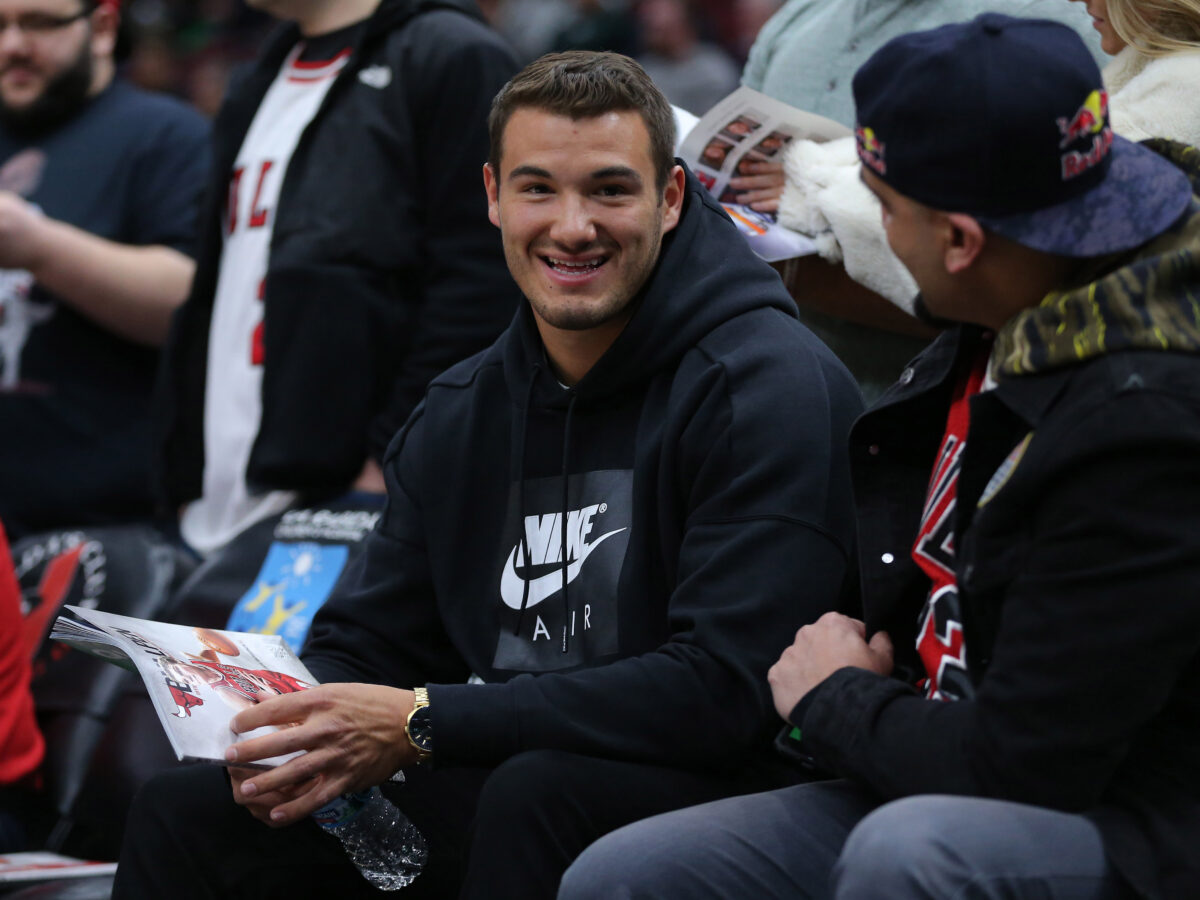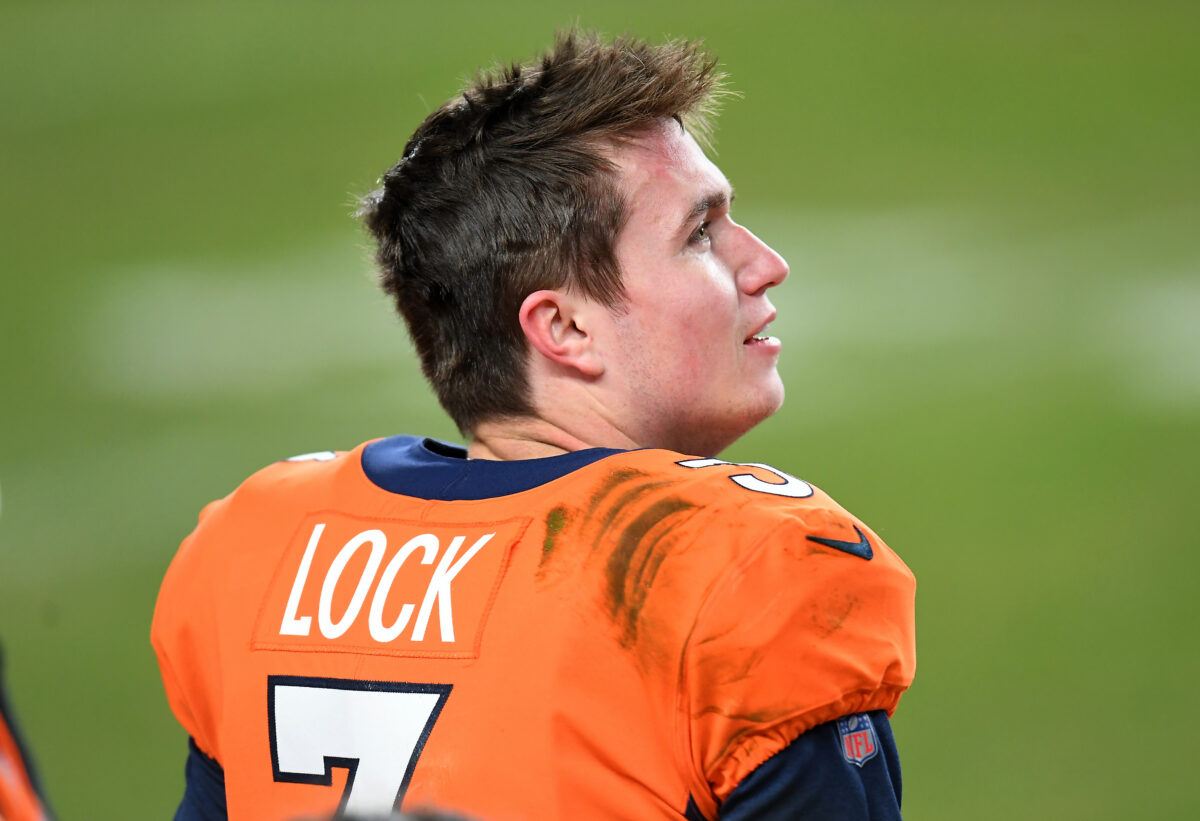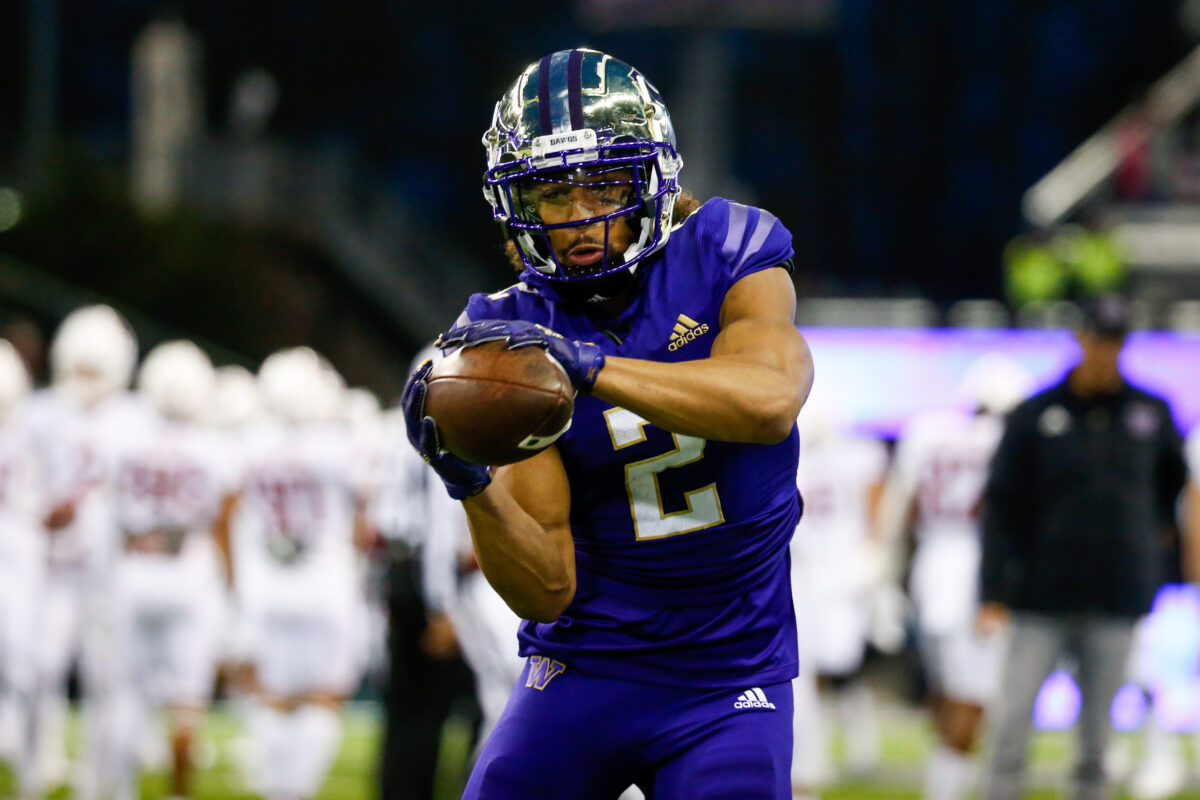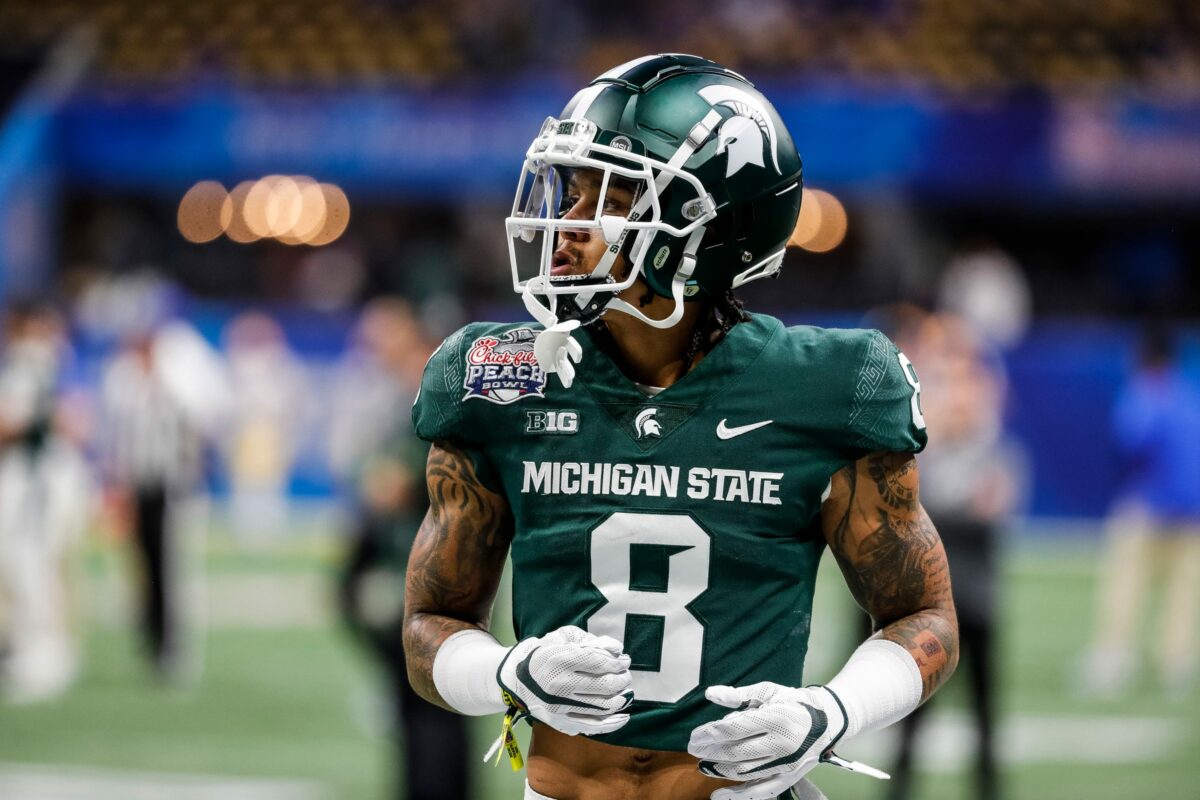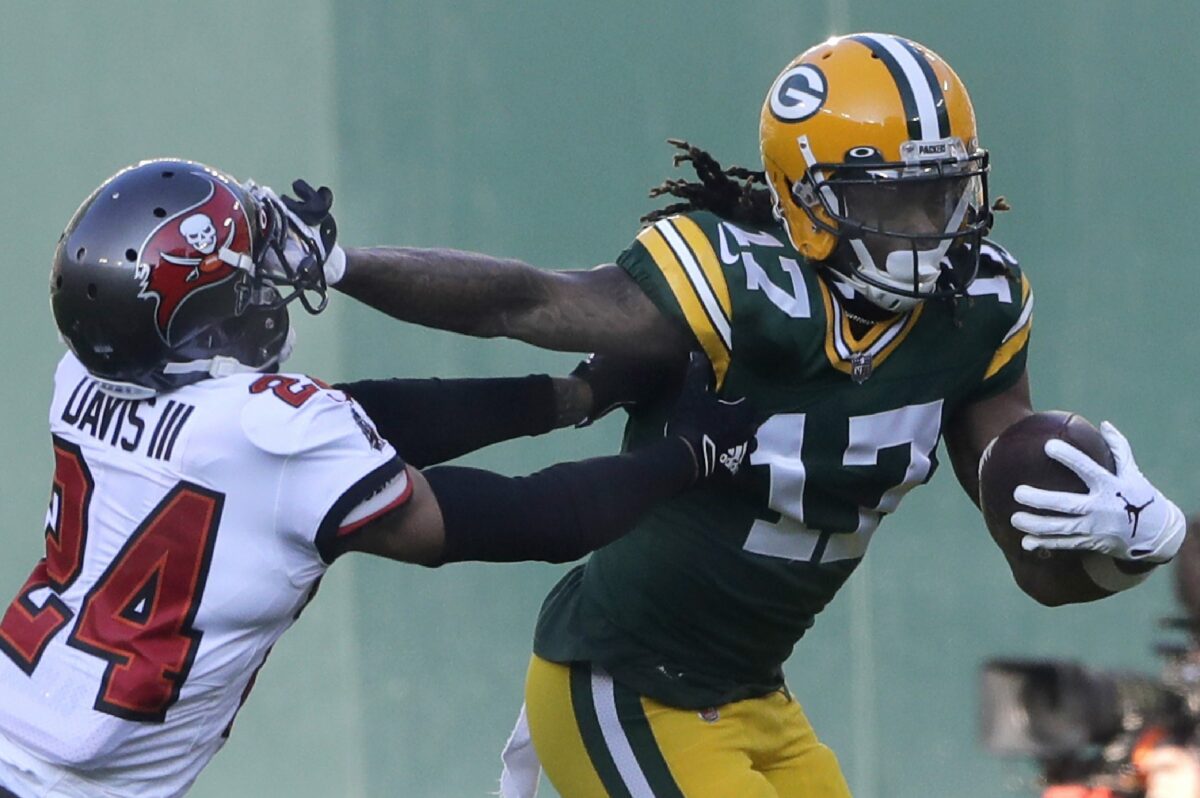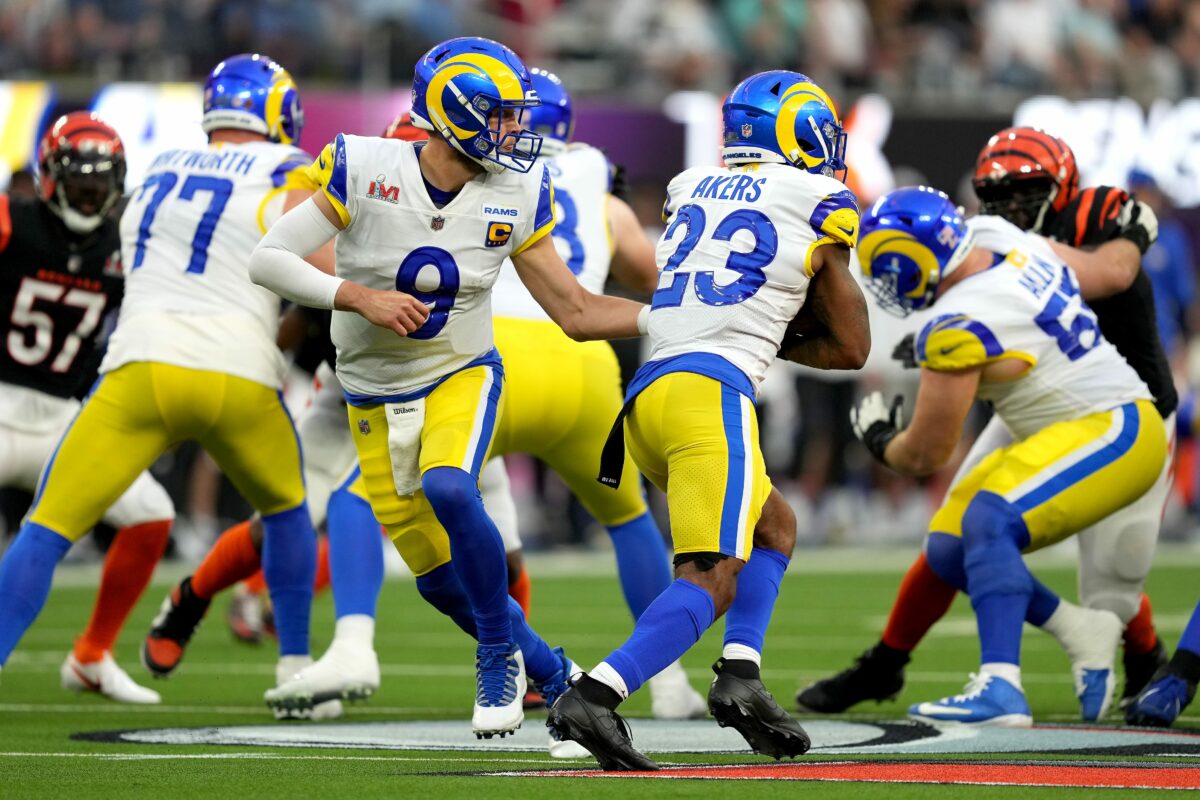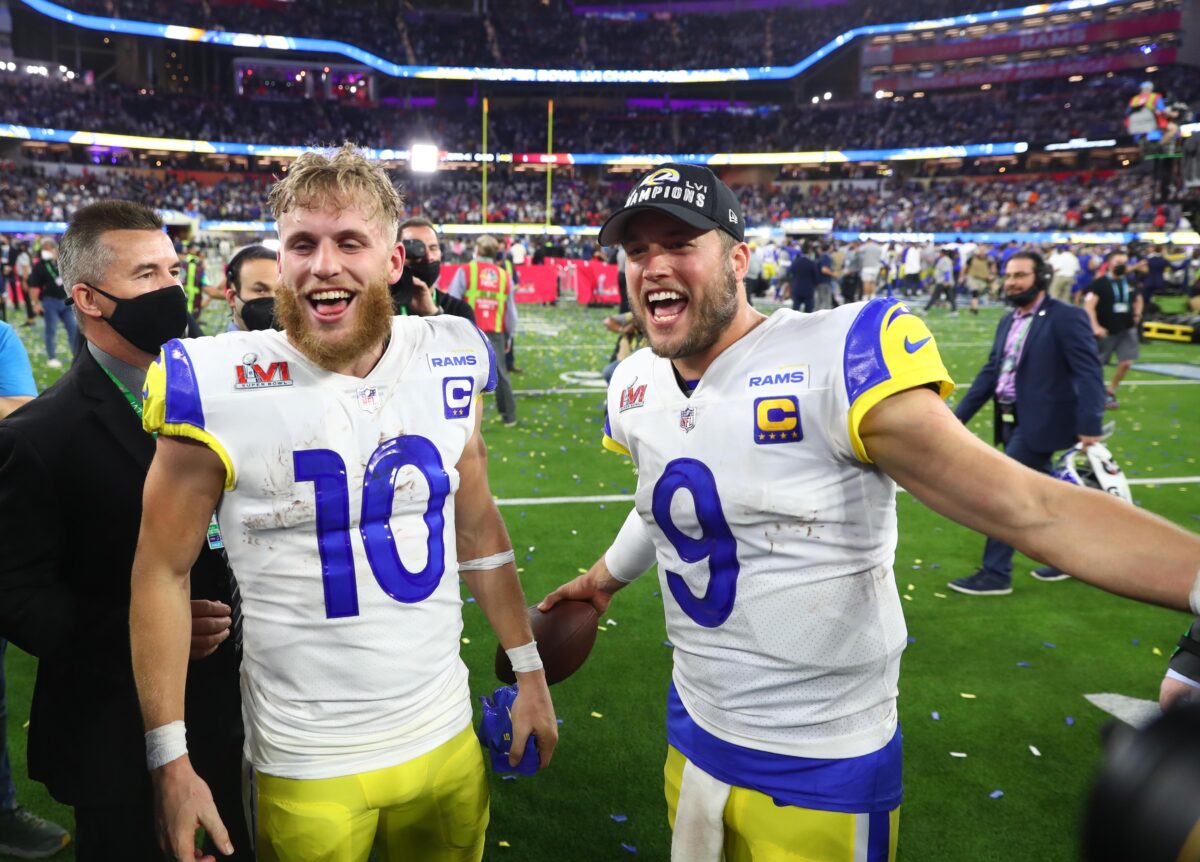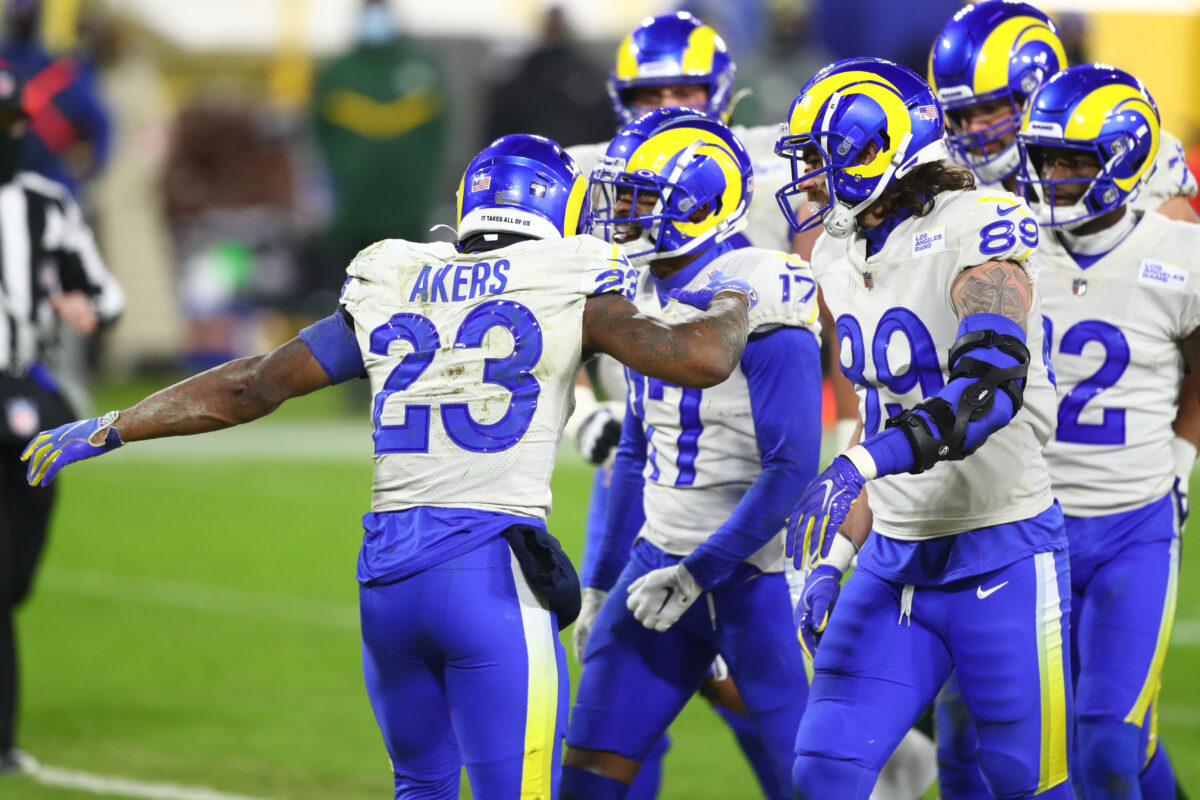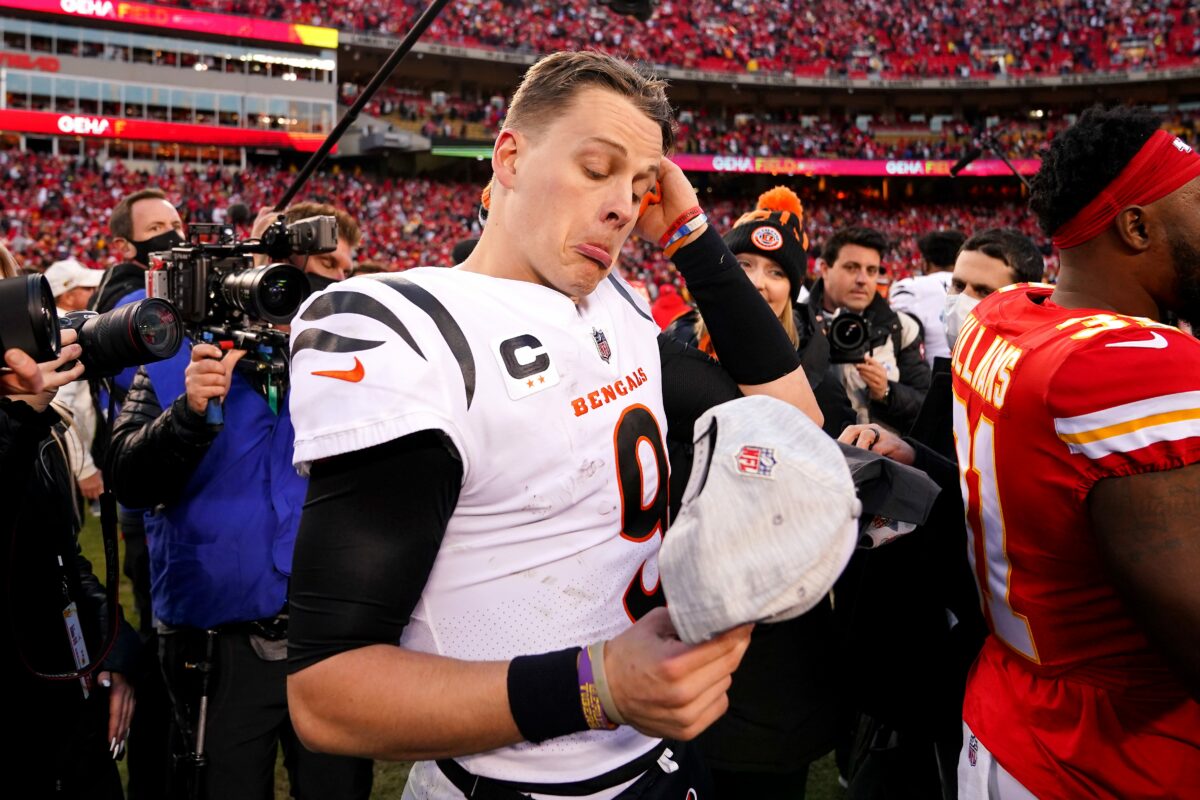Is Matthew Stafford a Hall-of-Famer after the Rams’ win in Super Bowl LVI? Hard to say, but one throw to Cooper Kupp was Canton-worthy.
[mm-video type=video id=01fvz35p3t7as7sk729k playlist_id=none player_id=none image=https://images2.minutemediacdn.com/image/upload/video/thumbnail/mmplus/01fvz35p3t7as7sk729k/01fvz35p3t7as7sk729k-7ed793f619a03117089a996c14909562.jpg]
The debate is rolling thick and fast right now as to whether Matthew Stafford is a Hall-of-Famer after the Rams won Super Bowl LVI. It’s a discussion I’d rather table until Stafford does a few more things in his estimable career (or not), but I have no doubt that when his team needed him the most to do something incredible against the Bengals’ defense in the fourth quarter of that game, Stafford came through with a ridiculous throw that should be in Canton (in some form or fashion) right now.
There’s already a decent library of ungodly Super Bowl throws, but it’s hard to to any better than this. With 3:06 left in the game, and the Bengals up 20-16, the Rams had second-and-7 from the Cincinnati 46-yard line. Stafford needed Kupp on this play, and he made that clear before it happened.
“Nice job digging in on that cheese,” Stafford told Kupp after the drive ended in Los Angeles’ game-winning touchdown. “Might be the best no-looker we got all year.”
It’s hard to argue that point. Even Patrick Mahomes, the current master of the off-platform, no-look pass, was impressed.
The dots show the conflict Cincinnati’s defense was in on that side, with Kupp heading over intermediate coverage, and tight end Brycen Hopkins taking the sit route underneath.
The overhead view shows the Bengals in Cover-3, with safety Von Bell as the robber underneath. After the game, Kupp brought up the fact that the Rams’ frequent use of no-huddle in that last drive forced the Bengals to stay in zone coverage — then, it was up to Kupp to find the gaps in those zones.

“[Head coach] Sean [McVay] did a great job — we were in a hurry-up in that last drive to keep them from setting some rushes, but also to keep them in zone calls, where you can put some pressure on them, and get some calls they feel comfortable playing,” Kupp said. “Zone some stuff off, and allow Matthew and I to find soft spots in there.”
On that play, though, Kupp was as surprised as anybody.
From the end zone view, you can see the extemporaneous nature of the throw and catch far more clearly.

The view Mahomes reacted to shows just how nuts it really was. If Bell doesn’t fall for the banana in the tailpipe — if he stays up top to react — he’s got at least a deflection, if not a game-deciding interception. Stafford had to have stones the size of two mansions to even attempt that throw into such tight coverage. He’d already thrown two interceptions in the Super Bowl, and he led the league with 20 picks thrown in the regular and postseason combined. We were a few Von Bell steps away from an entirely different discussion regarding Stafford’s legacy. But Stafford’s ability to move defenders with his eyes and his specific location, and his faith in Kupp, won the day.
“Yeah, they were playing a tough coverage for the play, to be honest with you,” Stafford said from Disneyland after the fact, sitting next to Kupp and Aaron Donald. “They had a safety [Bell] inserting into the right spot, and I just tried to move him enough to give Coop a chance to get behind him — move him with my eyes and my body, and was able to get it done. Great job by Cooper, trusting me there. I’m going to put it in a good spot, and he went in there and caught it, and made a big play.”
As ESPN’s Dan Orlovsky (Stafford’s teammate in Detroit in 2015, and the Lions’ primary quarterback in 2008, the year before Stafford was drafted first overall) pointed out in his own breakdown of the play, Stafford did a brilliant job of putting Bell on a string, and leading Bell where he needed Bell to go.
There are players who are able to make the biggest and best plays in the most important situations of their professional lives. We always wondered if Matthew Stafford would become such a player. Now, there is no doubt. When the Rams needed him most, Stafford came through with the gutsiest, almost stupidest, and in the end, most impactful throw he’s made in his 13-year career.
Whether that gets Stafford himself into Canton is a separate discussion, but the throw was Canton-worthy from the second it was completed.
